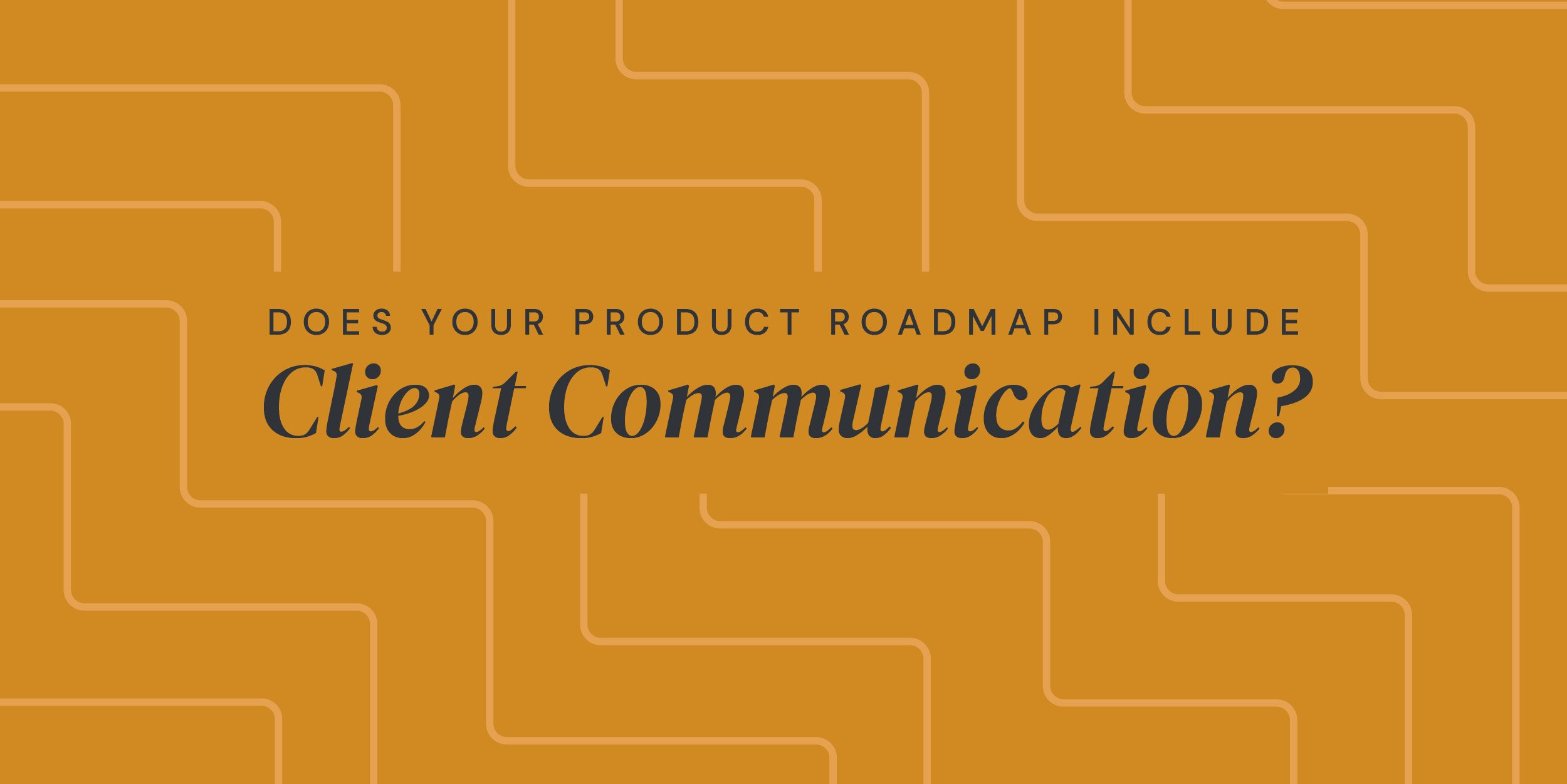The copywriter’s desk is littered with coffee mugs and Aha cans. The software team has gone through more fruit smiles, hot coffee, and midday iced coffees than is healthy. The project manager and the designer—two words—more coffee. But, the day is here. The product refresh is ready to launch. Slack announcements are made. The response emojis are maxed out.
Then reality sets in. There is zero plan for rollout. No client communication. No notice for existing users. No launch plan beyond the Slack announcement.
Yikes.
Can I tell you how you ended up here?
No client communication in your product roadmap.
Why Your Product Roadmap Needs Client Communication
When our marketing director is asked:
Should you add client communication to your product roadmap?
Her answer is always

First, let’s talk about product roadmaps.
What is a Product Roadmap?
A product roadmap is a visual tool that shows how a product, feature, or company gets from where they are to an end goal. A product roadmap tracks specific priorities during a set period of time. While it may be put together by an account manager or product owner, it requires input and buy in from the whole team. It scopes all pieces of the project and makes sure time, budget, and any other resources are accounted for.
There are two types of product roadmaps:
- Waterfall - a long-term roadmap with set timelines
- Agile - a roadmap that accommodates inevitable changes
Why Use a Product Roadmap
Product roadmaps are exactly that—a guide to keep everyone on the same course. Product roadmaps are important for large teams or complex projects. They make sure everyone understands the end goal. They help whole teams focus resources to meet deadlines—especially when starting a task is dependent on another task being completed.
Product roadmaps also help teams narrow their scope to reach goals. Just like a SMART goal helps goals be specific enough to actually be met, product roadmaps help a software product solve the user’s problem.
3 Reasons to Include Client Communication in Your Product Roadmap
You Need to Know User Problems to Solve Them
Users are often clients. And regular, planned communication means you hear about new and ongoing challenges. This doesn’t refer to just hearing about small issues with the product. These problems are often the pain points the software is looking to solve. Talking to clients exposes early bugs, unexpected UX issues, or new problems your software can solve.
Knowing problems leads to solving problems. So, add check-ins to your product roadmap.
No One Knows the Market Better Than a Client
Roadmaps are all about meeting specific goals. Goals may be a launch date, KPI, leads, or sales. Setting achievable, effective goals requires knowing your audience and market needs. And if you’re not keeping an eye on the market, you’ll miss the pivot moment. Because in the digital era, customer needs and market resources change quickly. And while a marketing agency or software developers may have a general feel for the market, your client and the end user truly understands the market.
Take a moment to schedule time to hear from the end product expert.
Alignment Requires Regular Communication
Whether you’re looking to launch a new product or keep a client account on track, regular communication is key. In the weeks leading up to the launch, you might need to plan for weekly or twice a week check-ins with clients. Having this included in the product roadmap means this time is accounted for. Plus, those regular check-ins may expose bugs and issues before the furious-48 right before launch.
How to Work Client Communication Into Your Product Roadmap
And if you’re wondering how to add client communication cadence to your roadmap, we’ve got some easy techniques:
- Tie communication to on-going deliverables
- Schedule it — monthly or bi-weekly
- Don’t limit yourself to meetings — emails are valuable too!





